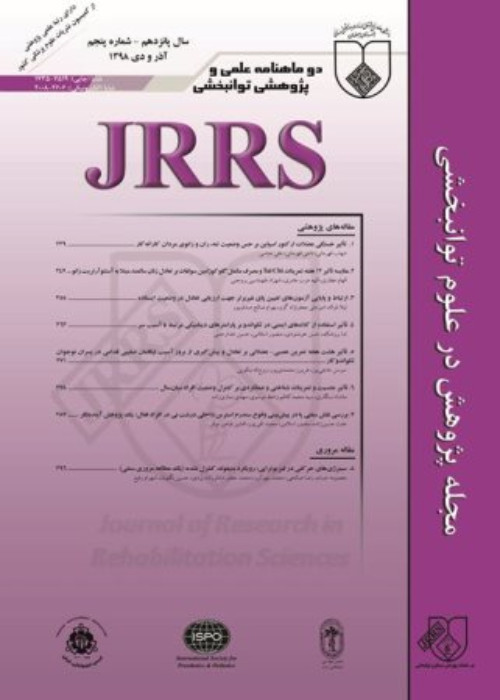Simulation of the response of nerve fibers to the applied interferential currents
Author(s):
Abstract:
Introduction
Interferential current is one of the most popular kinds of electrical stimulation that are used in electrotherapy. Despite its clinical popularity، there have been limited studies to investigate how this stimulation protocol affects the nerve fibers. This study was aimed to develop a realistic model for the stimulation of nerve fibers by interferential currents and using that to assess the spatial and temporal activation patterns of fibers in response. The effect of the modulation frequency on the resultant neural activity was also evaluated. Materials And Methods
A model of the target tissue، including the skin، fat and muscle layers was implemented in COMSOL software to obtain the potential distribution induced by the current inside the tissue. Then the MRG model of the myelinated nerve fibers in NEURON environment was used to simulate the response of fibers at different positions in the tissue. A 4 KHz carrier frequency with the modulation of 1 to 250 Hz and stimulus strength of 1 to 99 mA was used in this study. Results
The sensory fibers that are passing right beneath the electrodes are blocked in response to the applied high frequency currents and cannot conduct the action potentials. The sensory and motor fibers in other positions of the tissue can be activated based on the stimulus amplitude and the modulation frequency. The temporal activation pattern is at frequencies equal or twice of the modulation frequency. The excitation thresholds for fibers in a specific depth of the tissue are different based on their position relative to the electrodes، and even fibers that are outside the borders of the four electrodes can be activated. Conclusion
The results demonstrate how the block of sensory fibers may decrease the patient discomfort، and suggests that non-target fibers outside the region of electrode placement may also affected by the stimulation. Moreover، the results confirm the traditional claims about role of the modulation frequency in the firing frequency of nerve fibers.Keywords:
Language:
Persian
Published:
Journal of Research in Rehabilitation Sciences, Volume:10 Issue: 2, 2014
Pages:
315 to 327
https://magiran.com/p1317648


